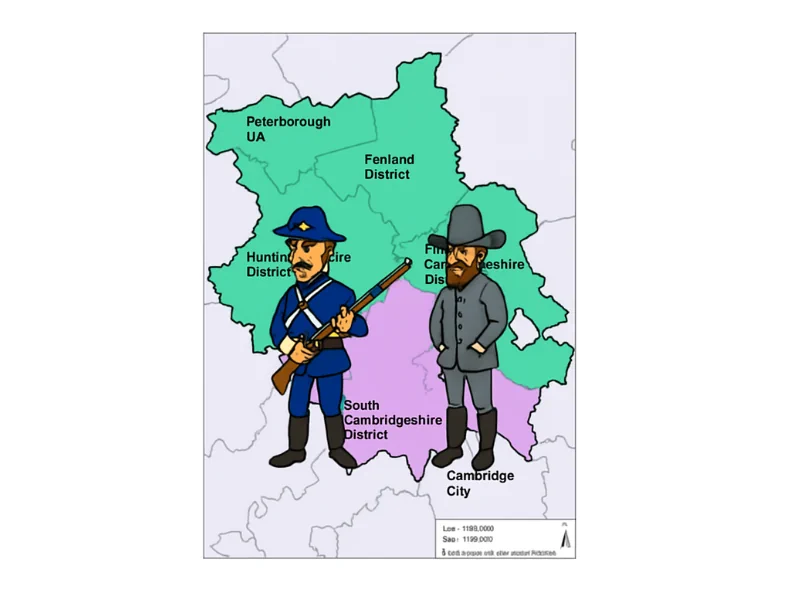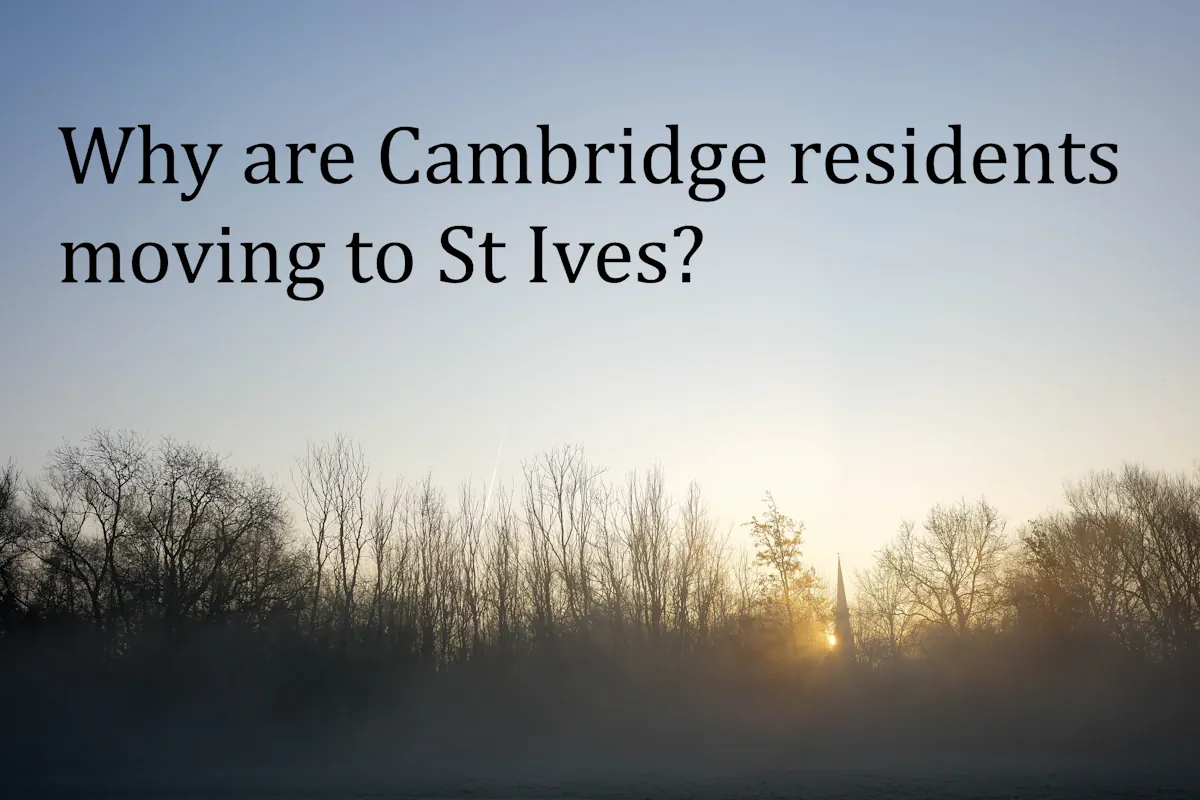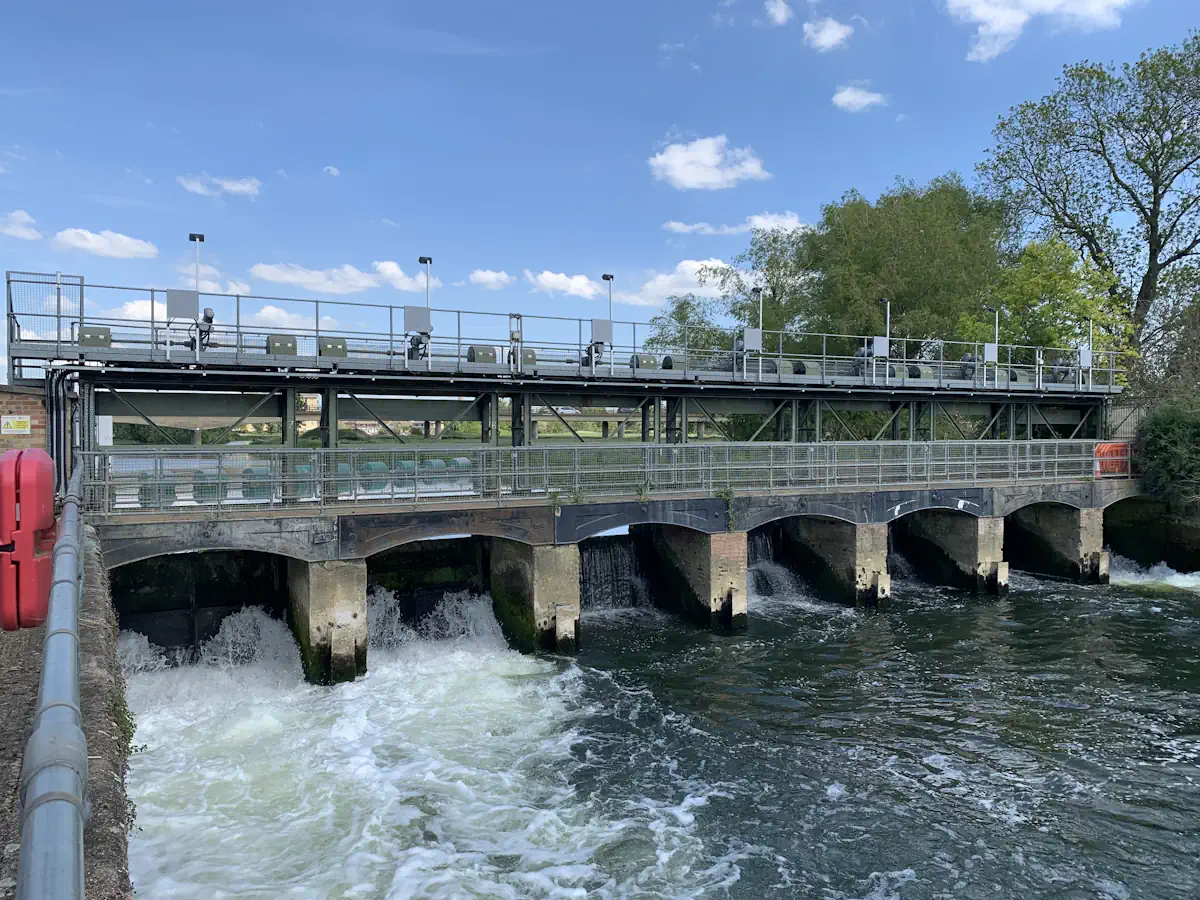Reminiscent of the American Civil War, Cambridgeshire and Peterborough local governments are drawing battle lines in a North vs South split.
There’s no need to worry about muskets being fired any time soon, but what would a local government reshuffle mean for St Ives, and how will it affect us?
Proposal to create two unitary councils
In June 2025, the seven councils in the region proposed three possible ways to create just two new “unitary councils”, which would replace the current county and district councils.
These new authorities would take on all local responsibilities – everything from bin collections to school funding – so one council would now call all the shots within what would be a larger regional area.
The proposed battle lines
- Proposal A (North-West vs South-East): Peterborough, Huntingdonshire, and Fenland would form one unitary, with Cambridge, East Cambridgeshire, and South Cambridgeshire forming the other.
- Proposal B (North vs South): Peterborough, Huntingdonshire, Fenland, and East Cambridgeshire would be the northern unitary, leaving Cambridge and South Cambridgeshire in the south.
- Proposal C (East vs West): Peterborough, East Cambridgeshire, and Fenland would be the eastern unitary, with Cambridge, Huntingdonshire, and South Cambridgeshire in the west.
At the current time, Proposal A is receiving the most traction, which would see St Ives (and Huntingdonshire) governed as part of the Peterborough region rather than Cambridge.
However, Proposal C would mean St Ives would have an allegiance with Cambridge government, echoing the shifting front lines of historic North-South conflicts.
Why it matters to you
Supporters say the new structure could bring:
- Simpler services: One council to call for everything – no more “county or district?” confusion over potholes or planning.
- Cost savings: Fewer councils and fewer meetings, with the potential to free up funds for frontline services.
- Better coordination: Large-scale planning for housing, transport, and schools could be smoother under a single authority.
However, critics warn of potential downsides:
- Smaller communities could lose influence under a larger umbrella.
- Transition issues: Combining staff, systems, and responsibilities is never straightforward and may cause temporary disruption.
What are the next steps?
Councils must submit their final proposals to the Government by November 2025.
If approved, the new councils will operate in shadow mode from May 2027, with full powers from April 2028, known officially as Vesting Day.
So, while Cambridge and Peterborough won’t be trading cannon fire, a strategic struggle is unfolding – one that could redefine local government boundaries and influence who calls the shots in St Ives and surrounding villages.
Whether you end up in the “North” or the “South,” the aim is the same – hopefully resulting in a leaner, simpler, and potentially more effective local government.




